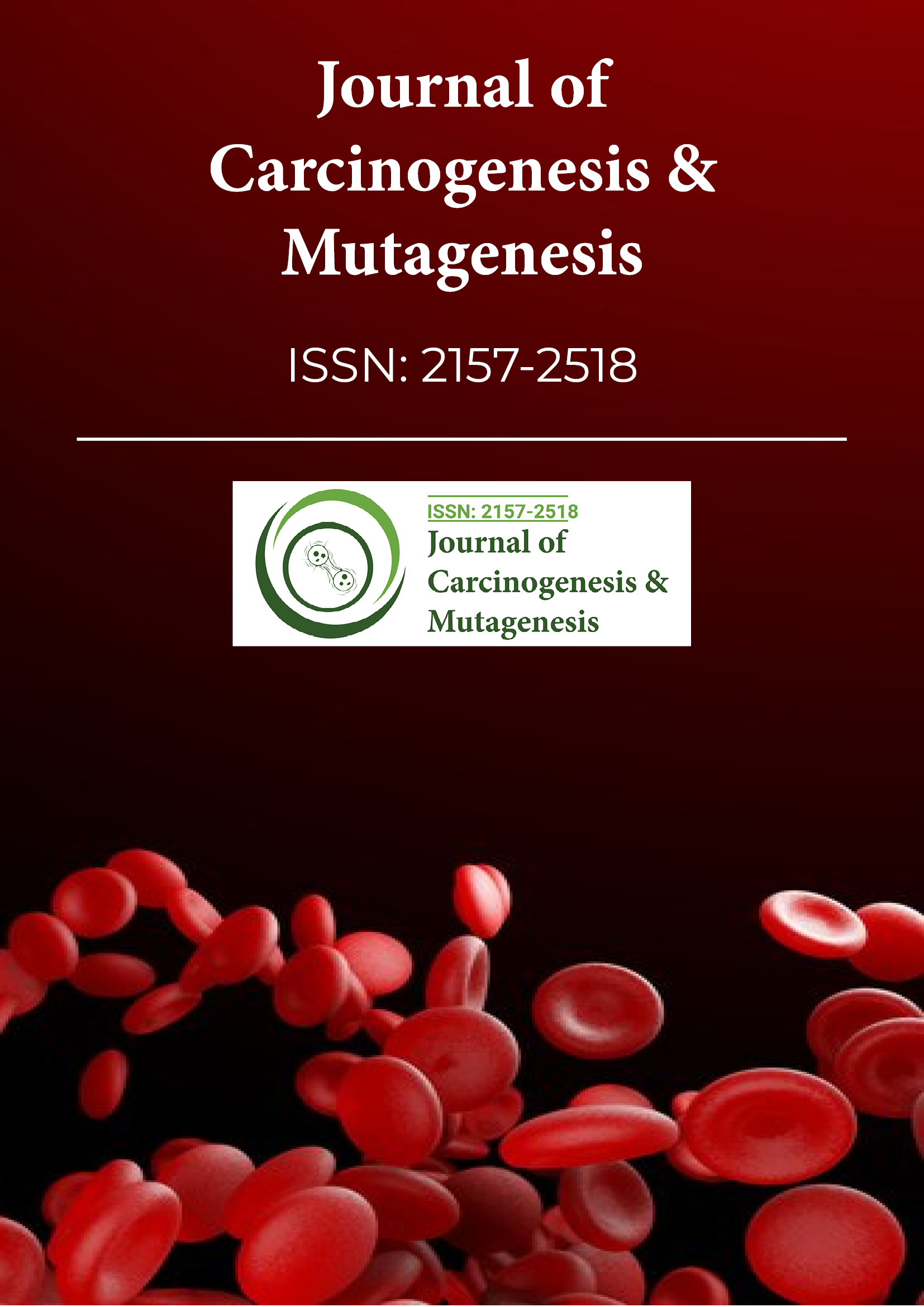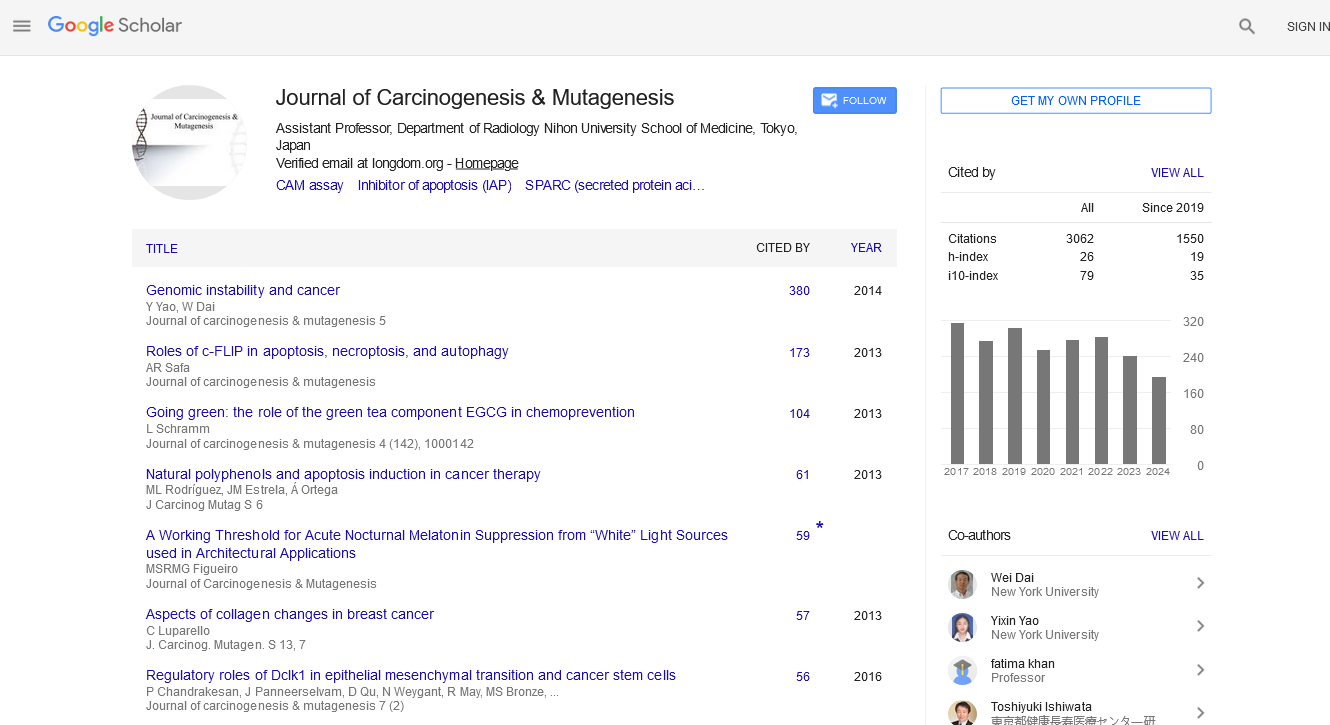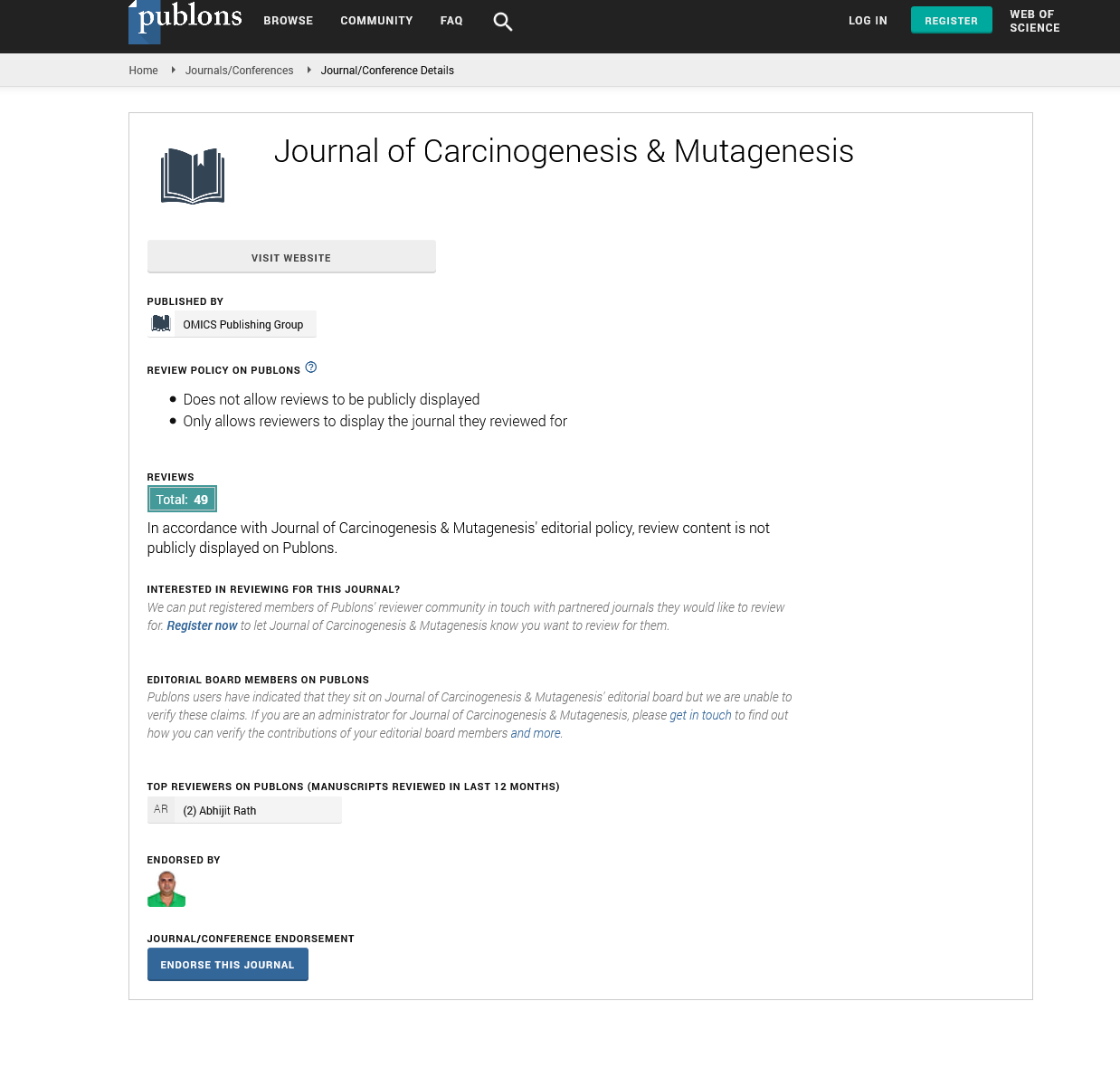Indexed In
- Open J Gate
- Genamics JournalSeek
- JournalTOCs
- Ulrich's Periodicals Directory
- RefSeek
- Hamdard University
- EBSCO A-Z
- OCLC- WorldCat
- Publons
- Geneva Foundation for Medical Education and Research
- Euro Pub
- Google Scholar
Useful Links
Share This Page
Journal Flyer

Open Access Journals
- Agri and Aquaculture
- Biochemistry
- Bioinformatics & Systems Biology
- Business & Management
- Chemistry
- Clinical Sciences
- Engineering
- Food & Nutrition
- General Science
- Genetics & Molecular Biology
- Immunology & Microbiology
- Medical Sciences
- Neuroscience & Psychology
- Nursing & Health Care
- Pharmaceutical Sciences
Commentary - (2025) Volume 16, Issue 2
The Applications of Gene Therapy in the Treatment of Genetic and Acquired Diseases
Teresa Partmans*Received: 01-Apr-2025, Manuscript No. JCM-25-29008; Editor assigned: 03-Apr-2025, Pre QC No. JCM-25-29008 (PQ); Reviewed: 17-Apr-2025, QC No. JCM-25-29008; Revised: 24-Apr-2025, Manuscript No. JCM-25-29008 (R); Published: 30-Apr-2025
Description
Gene therapy is an emerging and transformative approach in modern medicine that involves the introduction, removal, or alteration of genetic material within a patient's cells to treat or prevent disease. This technique aims to correct underlying genetic disorders by targeting the root cause—defective or missing genes rather than merely treating the symptoms. The development of gene therapy represents a significant shift in medical science, moving from conventional pharmaceutical treatments to precision-based genetic interventions.
At its core, gene therapy works by delivering functional genes into a patient’s cells using various methods. The most commonly used carriers are viral vectors, such as adenoviruses, lentiviruses, or adeno-associated viruses, which are engineered to be nonpathogenic. These vectors can efficiently introduce therapeutic DNA into the host cell, allowing the inserted gene to produce a functional protein that compensates for the defective one. Nonviral methods, including liposomes and nanoparticles, are also being explored for their potential safety advantages and lower immunogenicity.
Gene therapy holds particular promise for monogenic disorders—diseases caused by mutations in a single gene. Conditions such as cystic fibrosis, haemophilia, spinal muscular atrophy, and certain types of inherited blindness have shown encouraging responses to gene therapy trials. In these cases, a single corrected gene can significantly improve or restore lost function. Moreover, gene therapy is expanding its reach beyond rare genetic conditions to more common diseases, including cancers, cardiovascular disorders, and infectious diseases.
One of the most notable advancements in gene therapy is the use of genome editing tools like CRISPR-Cas9, TALENs, and zinc finger nucleases. These technologies enable precise editing of the DNA sequence within the genome, offering the potential for permanent cures. CRISPR-Cas9, in particular, has revolutionized genetic research by allowing scientists to cut DNA at specific locations, delete faulty segments, and replace them with healthy ones. While the technology is still being refined, early results from preclinical and clinical studies have demonstrated its capacity to correct mutations in conditions like sickle cell anemia and β-thalassemia.
Despite its immense potential, gene therapy faces several challenges that need to be addressed before it can become a widespread clinical reality. One of the primary concerns is safety. The use of viral vectors carries the risk of unintended immune responses or insertional mutagenesis, where the introduced gene disrupts other essential genes, possibly leading to cancer. There have been instances in early gene therapy trials where patients developed leukemia due to such events. As a result, newer generations of vectors and delivery systems are being developed with enhanced specificity and reduced toxicity.
Another major challenge lies in the delivery of gene therapy to the correct tissues and ensuring sustained expression of the therapeutic gene. For example, reaching target cells in the brain or heart remains difficult due to biological barriers like the blood-brain barrier. Researchers are working on improving tissue-targeting strategies and developing re-dosable or long-acting formulations to overcome these obstacles.
In conclusion, gene therapy represents one of the most promising frontiers in medical science, offering the potential to cure diseases at their genetic origin. Ongoing research, coupled with advances in molecular biology and bioengineering, continues to enhance its safety, efficacy, and applicability. While numerous scientific, logistical, and ethical challenges remain, the progress made in recent years suggests that gene therapy may soon become a standard treatment modality for a wide range of human diseases.
Citation: Partmans T (2025). The Applications of Gene Therapy in the Treatment of Genetic and Acquired Diseases. J Carcinog Mutagen. 16:472
Copyright: © 2025 Partmans T, et al. This is an open-access article distributed under the terms of the Creative Commons Attribution License, which permits unrestricted use, distribution, and reproduction in any medium, provided the original author and source are credited.


